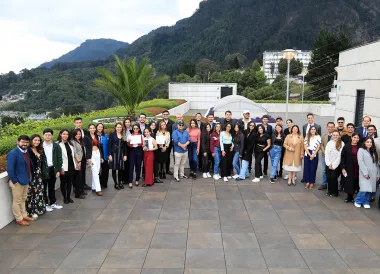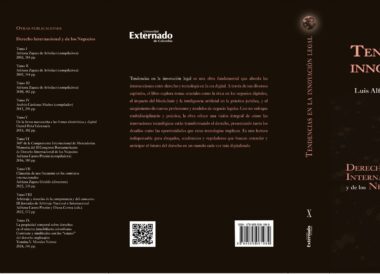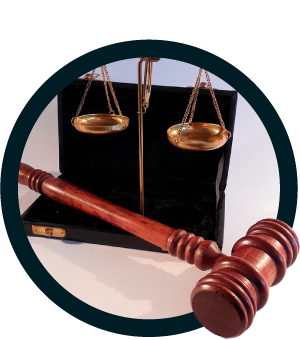28 de marzo de 2025
Navigating the new cyber frontier: combating disinformation in business.
Introduction
Disinformation security is an aspect of cybersecurity that focuses on protecting organizations and individuals from the harmful effects of false or misleading information. Disinformation campaigns can be highly sophisticated, often utilizing advanced technologies such as artificial intelligence (AI) and machine learning to create and rapidly disseminate false content. These campaigns not only affect public perception but can also have serious consequences for the security and stability of institutions.
To combat disinformation, organizations employ various techniques and technologies. These include monitoring social media to detect false information, using AI to identify deepfakes, and implementing cybersecurity measures to protect against phishing and malware attacks. A holistic approach is essential, involving different departments such as security teams, public relations, marketing, and legal counsel to reduce risks, increase transparency, and enhance overall security.
Disinformation is increasingly recognized as a significant cybersecurity threat. It can be used to manipulate public opinion, disrupt business operations, and even deliver malware by exploiting people’s fears and emotions. Disinformation campaigns can have far-reaching effects, from eroding public trust in institutions to influencing political outcomes, making them a concern for governments, businesses, and individuals alike.
The Dark Side of AI: Enhancing Disinformation Techniques with Machine Learning
Machine learning and artificial intelligence (AI) have revolutionized many fields, including the realm of disinformation. These technologies enable the creation of highly sophisticated and convincing false content, such as deepfakes, which are realistic but fake videos or audio recordings. By analyzing vast amounts of data, AI can mimic human behavior and speech patterns, making it increasingly difficult for individuals to distinguish between real and fake information. This capability not only amplifies the reach of disinformation but also enhances its credibility, posing significant challenges for detection and mitigation.
Moreover, AI-driven algorithms can optimize the dissemination of disinformation by targeting specific audiences with tailored content. These algorithms analyze user behavior and preferences to deliver personalized false information, increasing the likelihood of engagement and belief. Social media platforms, in particular, are vulnerable to such tactics, as AI can exploit their algorithms to spread disinformation rapidly and widely. This targeted approach not only maximizes the impact of disinformation campaigns but also makes them more efficient and harder to counteract.
In addition to creating and spreading false content, AI and machine learning can also be used to automate the management of disinformation campaigns. Bots powered by AI can generate and distribute large volumes of disinformation across multiple platforms simultaneously, overwhelming traditional detection methods. These bots can interact with real users, further blurring the lines between authentic and fake interactions. As a result, the integration of AI and machine learning into disinformation strategies represents a new frontier in cybersecurity, necessitating advanced countermeasures and a deeper understanding of these technologies to protect against their misuse.
The Impact of Disinformation on Institutions and Businesses in the Digital Age
Disinformation in the digital age poses significant threats to institutions and businesses, undermining their credibility and operational stability. One prominent example is the spread of false information about a company’s financial health. For instance, a disinformation campaign might falsely claim that a company is facing bankruptcy, leading to a sudden drop in stock prices as investors panic and sell off their shares. This not only affects the company’s market value but also erodes stakeholder trust, making it difficult for the business to recover even after the falsehood is debunked.
Another example is the impact of disinformation on public health institutions. During the COVID-19 pandemic, numerous false claims about the virus, vaccines, and treatments circulated widely on social media. These disinformation campaigns undermined public trust in health authorities and led to vaccine hesitancy, complicating efforts to control the spread of the virus. The resulting public confusion and mistrust had severe consequences for public health and safety, demonstrating how disinformation can exacerbate crises and hinder effective responses.
Businesses also face reputational damage from disinformation. For example, a coordinated attack might involve spreading false allegations about a company’s products or practices, such as claims of unsafe ingredients in food products or unethical labor practices. These false claims can go viral quickly, leading to consumer boycotts, legal challenges, and a tarnished brand image. Even if the company successfully disproves the allegations, the damage to its reputation can be long-lasting, affecting customer loyalty and market position.
Furthermore, disinformation can disrupt business operations by targeting internal communications and decision-making processes. Cyber attackers might use phishing emails containing false information to deceive employees into compromising sensitive data or systems. For instance, an email appearing to be from a trusted executive might instruct an employee to transfer funds to a fraudulent account. Such incidents not only result in financial losses but also expose vulnerabilities in the company’s cybersecurity defenses. This highlights the need for robust disinformation security measures to protect against both external and internal threats.
Strategies for Combating Disinformation the Digital Age
To combat disinformation, organizations employ a variety of techniques and technologies designed to detect and mitigate the spread of false information. One of the primary methods is monitoring social media platforms, where disinformation often proliferates. By using advanced algorithms and machine learning tools, organizations can identify patterns and sources of false information. For example, during election periods, social media monitoring can help detect and counteract false narratives aimed at influencing voter behavior. This proactive approach is crucial in maintaining the integrity of information in the public domain.
Artificial intelligence (AI) plays a significant role in identifying deepfakes, which are highly realistic but fake videos or audio recordings. AI algorithms can analyze subtle inconsistencies in visual and audio data that are often imperceptible to the human eye. For instance, AI tools have been developed to detect unnatural facial movements or audio mismatches in deepfake videos. These tools are essential for verifying the authenticity of content, especially in scenarios where deepfakes could be used to manipulate public opinion or damage reputations.
Implementing robust cybersecurity measures is another critical strategy in combating disinformation. Organizations must protect their digital infrastructure from phishing and malware attacks, which are often used to spread false information. For example, phishing emails might contain links to fake news websites or malicious software designed to steal sensitive information. By employing advanced cybersecurity protocols, such as multi-factor authentication and real-time threat detection systems, organizations can safeguard their networks and prevent the dissemination of disinformation through compromised channels.
A holistic approach to disinformation security involves the collaboration of various departments within an organization. Security teams, public relations, marketing, and legal counsel must work together to develop comprehensive strategies that address both the technical and communicative aspects of disinformation. For instance, public relations teams can craft clear and transparent messages to counteract false claims, while legal teams can pursue actions against perpetrators of disinformation. This coordinated effort ensures that all potential vulnerabilities are addressed, and the organization can respond swiftly and effectively to disinformation threats.
Finally, increasing transparency and public awareness is vital in the fight against disinformation. Organizations can engage in educational campaigns to inform the public about the dangers of disinformation and how to recognize it. For example, media literacy programs can teach individuals to critically evaluate the sources and content of the information they encounter online. By empowering the public with knowledge and tools to identify disinformation, organizations can reduce the overall impact of false information and foster a more informed and resilient society.
Unfair Competition and Passing Off: Legal Tools Against Business Disinformation in the Digital Age
In the digital age, businesses face significant challenges from disinformation campaigns that can damage their reputation and market position. Legal tools such as unfair competition and passing off provide robust mechanisms to combat these threats. Unfair competition laws protect businesses from deceptive practices that harm their economic interests, while passing off safeguards against the misrepresentation of goods or services. Together, these legal frameworks offer a comprehensive approach to addressing disinformation.
Unfair competition encompasses a range of deceptive practices, including false advertising, trade libel, and misappropriation of trade secrets. For example, a competitor might spread false information about a company’s product quality, leading to a loss of customers and revenue. Businesses can use unfair competition laws to seek remedies such as injunctions and damages. By proving that the disinformation caused economic harm, companies can hold perpetrators accountable and deter future misconduct.
Law 256 of 1996 in Colombia establishes a comprehensive framework to regulate unfair competition, aiming to ensure free and fair economic competition by prohibiting acts and behaviors that constitute unfair competition. This law applies to all market participants, including merchants and other entities, regardless of whether there is a direct competitive relationship between them. It defines unfair competition as any act or conduct that is contrary to good commercial practices and the principle of good faith, including actions intended to maintain or increase market share in an inappropriate or unethical manner. The scope of the law covers acts that have significant effects in the Colombian market and aligns with international standards, specifically the Paris Convention for the Protection of Industrial Property, ensuring consistency with global practices.
The law outlines several specific acts of unfair competition, including deceptive acts that mislead or confuse consumers about the nature, characteristics, or origin of goods or services; disparagement, which involves spreading false information to discredit a competitor’s products or services; imitation, which entails copying a competitor’s products, services, or business methods in a way that causes consumer confusion; exploitation of another’s reputation to gain an unfair advantage; violation of trade secrets through unauthorized use or disclosure; and inducement to breach contracts by encouraging someone to break a contract with a competitor.
Sanctions for these acts include cease and desist orders to stop unfair practices, compensation for damages incurred due to unfair competition, corrective advertising to counteract misleading information, and monetary fines. These measures aim to maintain fair competition and protect the interests of all market participants in Colombia.
Passing off (in common law countries) is another critical legal tool used to protect businesses from disinformation. This doctrine prevents one party from misrepresenting their goods or services as those of another, thereby causing confusion among consumers. For instance, if a business falsely claims that its products are endorsed by a well-known brand, the affected brand can file a passing off claim. Successful claims require demonstrating that the misrepresentation led to consumer confusion and potential damage to the brand’s reputation. This legal recourse helps maintain market integrity and consumer trust.
In the context of digital disinformation, both unfair competition and passing off can be applied to online activities. Social media platforms and websites are common venues for spreading false information about businesses. Legal actions can target not only the originators of disinformation but also intermediaries that facilitate its dissemination. For example, a company might pursue legal action against a social media influencer who falsely disparages their products, as well as the platform hosting the content. This approach ensures a comprehensive strategy to mitigate the impact of disinformation.
Finally, businesses must complement legal actions with proactive measures to protect their reputation. This includes monitoring online content, engaging in transparent communication with stakeholders, and educating consumers about recognizing disinformation. By combining legal tools with strategic public relations efforts, businesses can effectively counteract disinformation and safeguard their market position. In the digital age, a multifaceted approach is essential to navigate the complex landscape of business disinformation and maintain a competitive edge.
Conclusive Remarks
Disinformation security is a critical aspect of cybersecurity that focuses on protecting organizations and individuals from the harmful effects of false or misleading information. Disinformation campaigns can be highly sophisticated, often utilizing advanced technologies such as artificial intelligence (AI) and machine learning to create and rapidly disseminate false content. These campaigns not only affect public perception but can also have serious consequences for the security and stability of institutions.
To combat disinformation, organizations employ various techniques and technologies. These include monitoring social media to detect false information, using AI to identify deepfakes, and implementing cybersecurity measures to protect against phishing and malware attacks. A holistic approach is essential, involving different departments such as security teams, public relations, marketing, and legal counsel to reduce risks, increase transparency, and enhance overall security.
Disinformation is increasingly recognized as a significant cybersecurity threat. It can be used to manipulate public opinion, disrupt business operations, and even deliver malware by exploiting people’s fears and emotions. Disinformation campaigns can have far-reaching effects, from eroding public trust in institutions to influencing political outcomes, making them a concern for governments, businesses, and individuals alike.
One effective legal strategy to combat disinformation is the use of unfair competition laws. These laws protect businesses from deceptive practices that harm their economic interests, such as false advertising and trade libel. By pursuing legal action under unfair competition statutes, businesses can seek remedies such as injunctions and damages, holding perpetrators accountable and deterring future misconduct.
Addressing disinformation requires a multifaceted approach that combines advanced technological solutions, coordinated organizational efforts, and robust legal strategies. By leveraging these tools, organizations can protect their reputation, maintain public trust, and ensure the stability of their operations in the face of increasingly sophisticated disinformation threats.
Artículos Recientes
¡Ya está disponible el caso! Segunda versión del Concurso Laboratorio de Estrategia Legal #LSL
Invitamos a los estudiantes de pregrado y postgrado de todas las carreras a presentar [...]
Masterclass Legal Operations: Transformando la Función Legal Empresarial de Guardián de Riesgos a Creador de Valor.
El Departamento de Derecho de los Negocios y la Facultad de Administración de Empresas [...]
Conclusión del Proceso de Reforma al Investor-State Dispute Settlement
En la semana del 12 de julio de 2023, durante la sesión anual de [...]
El Departamento de Derecho de los Negocios de la Universidad Externado de Colombia abre convocatoria para la vacante de Asistente de Investigación
¡Sé parte de nuestro equipo de trabajo! Perfil del cargo: Asistente de Investigación Apoyar [...]
Docente del Departamento de Derecho de los Negocios participó en el libro Blanco de la Asociación de Derecho Internacional
La Asociación de Derecho Internacional (ADI), una de la organizaciones más antiguas y prestigiosas [...]
CRYPTO IN COLOMBIA: PROSPECTIVE 2022
By: Daniel Peña Valenzuela The volatility of the main cryptocurrencies seems to be once [...]
Convocatoria de Monitores.
El Departamento de Derecho de los Negocios se complace en anunciar la apertura para [...]
¿Se avecina una regulación de la Franquicia por parte del Gobierno? ¿O lo impedirá la Corte Constitucional?
Por: Juan Miguel Álvarez* y Diana Marcela Araujo* En diciembre del 2020, el congreso [...]
Grabación masterclass: Blockchain e Inteligencia Artificial: El Futuro de la Resolución de Disputas
GRABACIÓN DE LA MASTERCLASS La evolución tecnológica está redefiniendo el panorama legal a un [...]
Determinando el Futuro del Derecho: “Tendencias en la Innovación Legal”
La transformación digital está redefiniendo el ejercicio del derecho, exigiendo a los abogados una [...]
Solución a Controversias Comerciales vía Mediación: Algunas reflexiones en torno a la convención de Singapur
El pasado 12 de marzo de 2025, se realizó el Foro de Solución a [...]
Especialización en Innovación Legal
Este programa se caracteriza por presentar un contenido de avanzada, visionario frente a las [...]


















